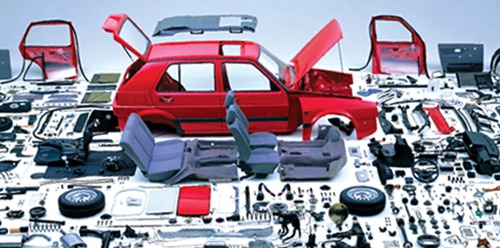You, Your Car and Your Ego
We have all seen it. The gleaming 4x4 roaring through Karachi’s clogged streets or parked dramatically on a slope for an Instagram-worthy flex. Or, maybe you, too, have seen the ad featuring an SUV heroically splashing through a river…
Meanwhile, my neighbour’s identical model struggles to clear the rainwater accumulation after a mild monsoon drizzle. The disconnect is almost poetic. But peel back the polish, and you may discover that the shiny SUV might just have a bigger ego than its driver. And an even bigger carbon footprint.
Bigger, Badder, Dirtier
Globally, SUVs emitted almost a billion metric tons of CO2 last year. That is more than Japan! In fact, if SUVs were a country, they would rank sixth in emissions. And while car sales declined overall, those for SUVs and 4x4s went up, especially in the electric category. In Pakistan, the story mirrors what is going on in the Western world, but with just a bit more flamboyance. Owning a big car is not just about transport; it is about being seen. SUV ownership is the desi equivalent of buying your way into a higher social tier. Indeed, psychological research, as explored by Stefan Gössling in The Psychology of the Car: Automobile Admiration, Attachment, and Addiction, reveals that vehicle choice profoundly impacts ‘collective and personal identities’, with traits like ‘power, control and dominance’ central to its enduring appeal. Fuel prices may hit the sky, but if your bonnet is higher than the guy next to you, apparently, it’s worth it.
Twenty Percent More Ego; 20% More Emissions
SUVs guzzle oil like a thirsty camel in a desert, consuming “about 20% more fuel than a midsize car for the same distance”. In other words, 20% more emissions. Electric SUVs carry the same dirty math: more weight means more energy and more lithium mining to feed oversized batteries. So yes, your ‘eco-conscious’ luxury EV might be emitting less per kilometre, but it is also demanding more from the planet before it even hits the showroom floor.
Profit Over Planet
Why are SUVs so aggressively marketed in Pakistan? Because carmakers (bless their capitalist hearts) make more money on them. Globally, they sell for up to 51% more than sedans, a price tag that is more about colossal markups served with a side of FOMO. And it is not just about profit; it is about what clever carmakers call ‘platform sharing.’ They invest heavily in one basic car skeleton – the hidden parts underneath, like the engine layout and mainframe. This flexible blueprint then allows them to build an entire range of different models and minimise how much it costs to design and make each new car. And guess what offers the juiciest return on that initial investment? Not the sensible sedan, but the oversized SUV. Why design a nimble, fuel-efficient microcar when you can slap a bigger body on the same bones, call it ‘rugged’ and charge 50% more? It’s genius if your genius doesn’t factor in melting ice caps or pedestrian safety. While SUVs use more materials, their inflated price tag is overwhelmingly driven by massive mark-ups, fuelled by consumer demand and flashy ads. It is not just the manufacturers, either. Policy often rewards the biggest buyers. In the US, SUV tax breaks incentivise bloat. In Pakistan, import duties and fuel subsidies have historically favoured larger vehicles, directly or indirectly.
More Metal, More Death
There is a human cost, too. Globally, heavier vehicles cause more pedestrian fatalities. One study found that in the US “Three thousand lives could’ve been saved (2000–2019) if SUV drivers had been driving regular cars instead.” Bigger cars mean poorer visibility, harder braking and more fatal impacts. Driving a regular sedan in Karachi traffic often feels like playing Frogger. Driving a 4x4, however, transforms you into the frog-eating alligator.
The Advertising Elephant in the Room
Let’s be real: this SUV boom didn’t just ‘happen.’ It was sold to us, hard. Pakistani auto ads glorify SUVs as tools of dominance, masculinity, luxury and ‘rugged sophistication.’ What they don’t show is the environmental cost, the public safety risk, or the fact that 80% of these vehicles will never see a hill steeper than a DHA Phase VI speed bump. Let’s be honest, the only off-roading most of these ‘adventure vehicles’ do is mount the sidewalk outside a café because finding parking requires a certain kind of vehicular audacity. This marketing push is not new. In 2006, even Land Rover (synonymous with off-road prowess) was already acknowledging the growing environmental concerns surrounding SUVs. They quickly announced their efforts to reduce emissions and invest in ‘environmental technology,’ while carefully maintaining their ‘core brand DNA’ – their off-road capability. The subtext? ‘Yes, we guzzle fuel, but look at how responsibly we guzzle it!’ It’s a delicate dance: projecting an image of rugged adventure while tiptoeing around the inconvenient truth of a massive carbon footprint. Indeed, Land Rover showcased efforts like reducing CO2 emissions at their Solihull factory “by 30% over 10 years,” investing “£700 million with Jaguar in environmental technology,” and running a “unique” and “largest consumer-facing” CO2 offset programme for the first 45,000 miles of vehicle use in the UK. This was a brilliant, albeit performative, understanding of the evolving market. Land Rover was remarkably astute at positioning itself as a responsible organisation, despite the inherent contradictions of their product line. The modern
SUV ad, whether from 2006 or 2025, is essentially a masterclass in cognitive dissonance, a carefully constructed narrative where ‘freedom’ and ‘responsibility’ coexist in the same monstrous vehicle.
The Alternative?
In France, buyers who trade in gas cars for electric bikes “get up to €4,000.” Washington, DC, is “taxing cars based on weight.” These are attempts to nudge people away from ego-driven vehicles toward actual sustainability. Pakistan? Still no serious incentives for hybrid/electric adoption, and none for e-bikes or public transport upgrades. Instead, we reward bulk and punish efficiency. An environmentally conscious car is seen as a compromise, not a flex.
Bottom Line
Today’s SUV craze, especially in Pakistan, is not about utility; it is about image. About who looks the most dominant at the traffic light, who can afford to waste the most fuel and who can ignore the climate crisis in the most comfortable leather seats. This is not just about personal choice; it is about a strategic ‘divergence’, a concept researchers at MIT have explored, whereby car companies, driven by short-term profits, deviate from building efficient, common platforms. Instead of making core designs that serve everyone, they lean into variations that are bigger, heavier and ultimately more profitable. They have found a market segment that is willing to pay for perceived power, and they are running with it, even if it means we are all running out of breathable air. It’s a strategic misstep for the planet, but a financial win for the boardroom. And until we address the advertising narratives, the broken policies and the unchecked consumer ego, we are just revving toward a hotter, deadlier future – in style, of course. Next time you see that colossal SUV gleaming in the sun, remember: it is not just your wallet that is getting lighter; it’s the planet too. Perhaps it’s time for us to ask ourselves: are we selling aspiration or annihilation? It’s time to redefine what ‘luxury’ really means. Is it bulky, or is it a smarter, cleaner and more conscious way to move forward?
Misha Muttalib is Creative Manager, Bond Advertising.




Comments (0) Closed